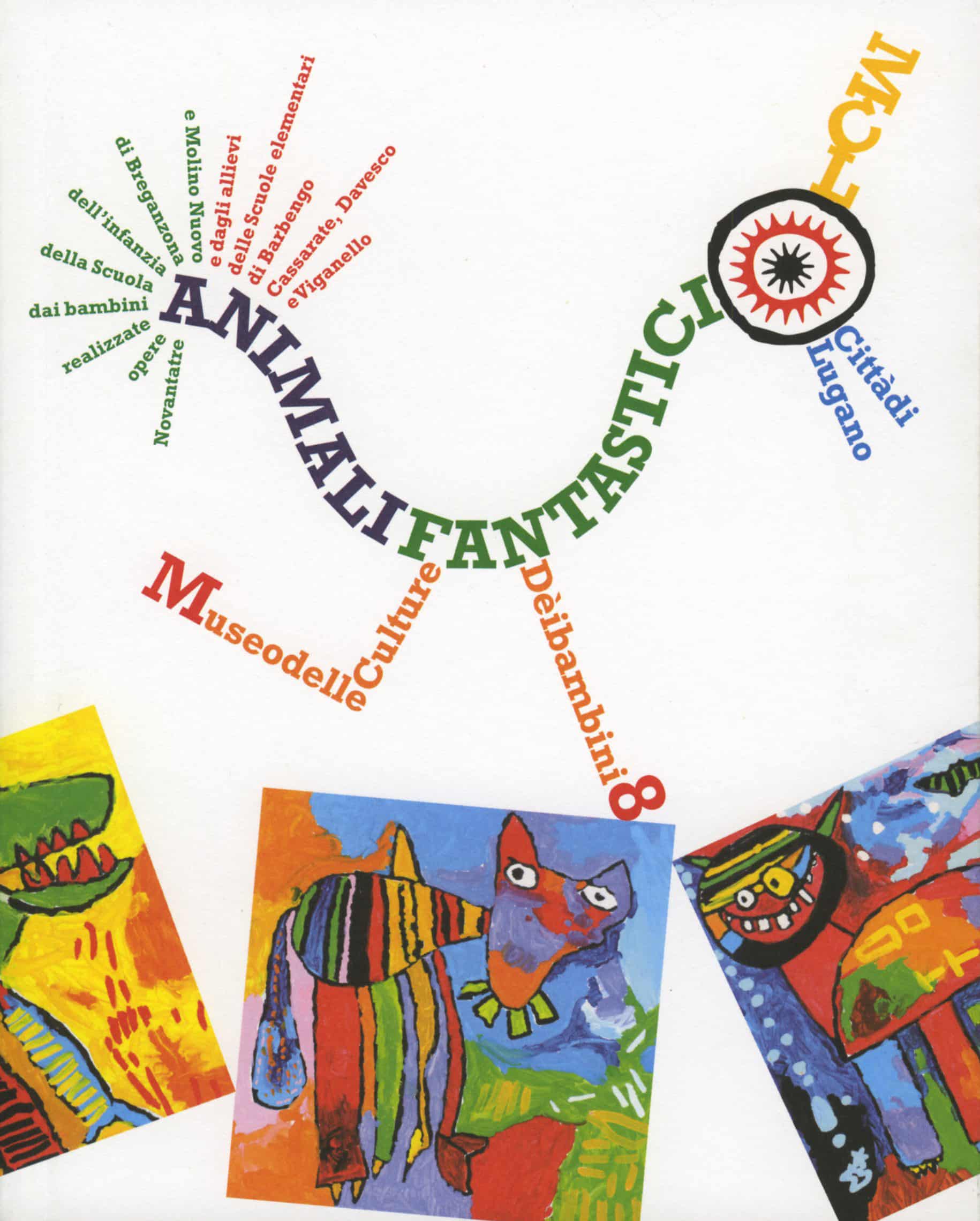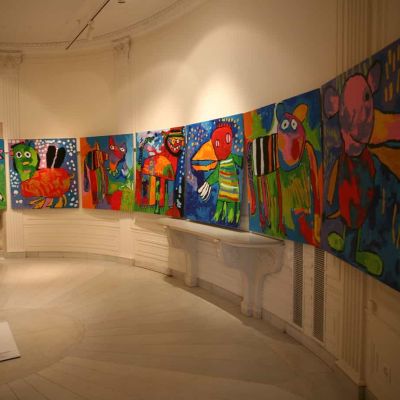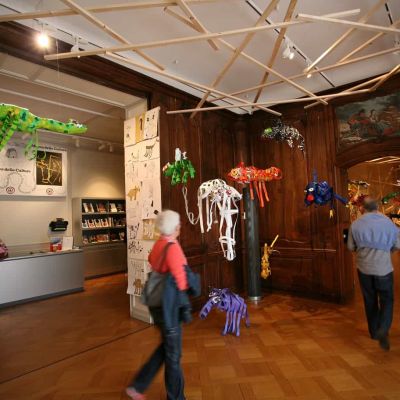HELENEUM – LUGANO
Year after year, from 2006 to today, the exhibitions of the “Dèibambini” cycle, realised in collaboration with the Municipal School Institute of Lugano, lead the MUSEC public to discover the profound underlying reasons for children’s creativity. For its eighth edition, the project is dedicated to discovering the ways in which children’s imagination expresses itself, through its relationship with fantastic animals. For six months, the children of two kindergarten sections (Molino Nuovo and Breganzona) and four primary school classes (Barbengo, Cassarate, Davesco and Viganello) in Lugano opened their eyes to an imaginary world, where everything is possible and where reality is populated by extraordinary places, beings and animals that embody man’s hopes, dreams and fears. Through the confrontation with the fantastic animals and their particular ‘powers’, the children were led by the hand to explore their imagination, to face their fears, and to allow what is internalised to emerge, transforming it into the choice and creation of their own fantastic animal, displayed in the exhibition.

Man assigns the characters of his inner world to animals, and when he cannot find a suitable animal to express a certain part of himself or his world, he invents one on purpose. Inherited from archaic cultures, unicorns, sirens, satyrs, phoenixes, basilisks, dragons, winged horses, griffins and many other fantastic animals populate literature and iconography from classical to modern times. From Homer to Pliny, from medieval bestiaries to the fairy tales of the Brothers Grimm, all the way to Harry Potter, their presence demonstrates the human need to fill the real with superior beings, who reassure by concretising and embodying the forces of Nature.
Through the study and observation of fantastic animals and the discovery of the multiple values and meanings they have in visual representations, symbols, ancient and contemporary literature, fairy tales and everyday life, both in simple cultures and in Western culture, the ‘Fantastic Animals’ project invited children to a deep reflection on the topic. In addition to the usual didactic tools, the starting point for the work were some of the MUSEC’s ethnic art works on display: Singa, a hybridised mythological primordial animal (lion, snake, buffalo and lizard) of the Batak people of Sumatra; Harimaung, a mythological ancestor and mythical warrior from southern Borneo; and finally the bünüts, a memorial pole configured in the shape of a crocodile, which leads the souls of the Asmat people (New Guinea) into the realm of the dead. The visit to MUSEC was also a special opportunity for children to learn about fairy tales, myths and traditions relating to fantastic animals in the cultures documented by the Museum. The Cantonal Museum of Natural History joined the project by contributing to the activities proposed to the classes.
The “Dèibambini” project was launched in 2005 as a platform for interaction between the museum and the school. In its first ten years, the project allowed children to try out different themes, with the aim of increasing their awareness of their own potential and inner vision and strengthening their ability to interpret the world. Since 2022, the starting point has been the works of children from the past. The idea is to build a bridge between the children’s creativity of yesterday and today, through the in-depth exploration of expressive content that not only interconnects cultures, but has served as an extraordinary source for the renewal of artistic languages in the 20th century. A solid bridge, full of poetry, to connect the generations.




